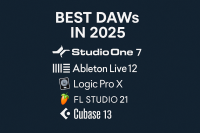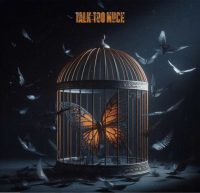You’ve got a great track. Now comes the hard part: getting people to actually hear it. Reaching out to music blogs, online magazines, and independent media can boost your visibility—but only if you pitch the right way. Inboxes are overflowing, so your message needs to cut through the noise.
Here’s how to craft a pitch that gets opened, read, and remembered.
1. Do Your Homework First
Before sending anything, research the blog or outlet. What genres do they cover? Do they spotlight new artists or focus on big names? Read a few recent articles. If you’re sending a deep house track to a hip-hop blog, it’s a guaranteed delete.
Create a list of targets that actually align with your sound. Focus on quality, not quantity.
2. Write a Killer Subject Line
Your subject line is your headline. Keep it short, specific, and intriguing.
Example:
🎯 “New soulful house track from Marseille-based indie artist — early support from local DJs”
Avoid all caps, vague wording, or clickbait. Editors don’t have time for games.
3. Be Clear, Personal and Professional
Your email should be short, friendly, and direct. Don’t copy/paste the same cold message to everyone. Mention the blog by name, reference a recent article or artist they’ve featured, and explain why your track is a fit.
Here’s a solid template:
🎧 Email Pitch Example
Subject: New Afro House Track – For Your Radar?
Hi [First Name],
Hope you’re doing well. I’m Sebastian McQueen, a house producer based in Ajaccio. I’ve been following [Blog Name] and loved your recent feature on [Artist X]—their blend of tribal grooves and synth textures really speaks to me.
I wanted to share my latest track “Milk Cloud,” a deep and percussive Afro House cut inspired by late-night sets on the coast. It’s fully independent, just released, and already getting early love from some underground playlists.
Here’s the link to stream/download: [Private link or SoundCloud/Spotify]
Cover art + press photos: [Link]
Bio + EPK: [Link if available]
Would love to know what you think. Let me know if you’d like a WAV file or anything else.
Thanks for your time,
Sebastian
[Website or Linktree]
[Social media links]
4. Don’t Attach Files
Never send MP3s or large attachments in the first email. Use streaming links (SoundCloud private is perfect) or a presskit download via Google Drive or Dropbox. Keep it light and easy to open.
5. Avoid These Common Mistakes
– Generic messages (“Hey, check out my music!” = instant delete)
– Too much info (edit it down—nobody wants an autobiography)
– Bad formatting (no walls of text—use clear line breaks)
– Broken links or typos (always triple check before sending)
6. Follow Up—Once
If you don’t hear back after 5–7 days, it’s okay to send a gentle reminder. Be polite, short, and understanding. If they’re not interested, move on. Never spam.
7. Build Relationships, Not Just Reach
Treat blogs and editors like human beings, not promotion tools. If someone supports your music, say thank you. Share the post, tag them, stay in touch. Relationships matter more than one-time exposure.
Final Thought
Getting media coverage as an indie artist is totally doable—with the right pitch and the right mindset. Keep it personal, keep it real, and remember: the goal isn’t just to get clicks, it’s to start conversations around your sound.
![]()














